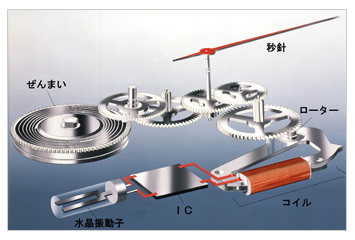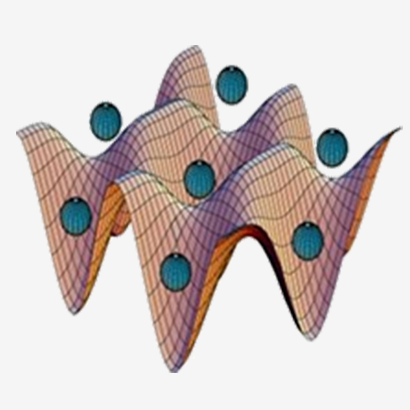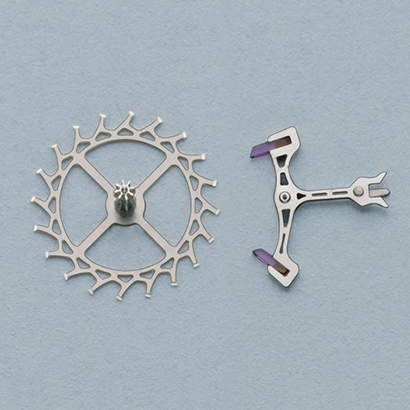In 1999, Seiko launched the Spring Drive, the world's first watch to combine a mainspring, to drive the mechanism and generate electrical energy, with quartz control.
The development of Seiko’s unique Spring Drive started in 1982 and took about 20 years to reach commercialization. Called the “third engine” of the industry, the Spring Drive is the ultimate watch, combining mechanical and quartz technologies.
Mechanism of the Spring Drive
1. The spring drive works like a mechanical watch, driven by the force generated from the unwinding of the mainspring.
2. A tiny portion of the power from the mainspring is transmitted to a rotor, or glide wheel, fitted with a magnet that generates electricity through the change in magnetic flux as it spins.
3. The electrical energy generated powers the IC and vibrates the quartz oscillator at 32,768 times per second (32,768 Hz).
4. A circuit called a frequency divider converts the frequency of the quartz oscillator into a signal 8 times per second (8 Hz) and sends the fixed reference signal at a frequency of 8 Hz.
5. The IC keeps the glide wheel moving at a constant speed to synchronize with the 8 Hz reference signal by comparing the reference signal of the quartz and the rotational speed of the glide wheel and using magnetic power to alternatively activate or release a brake on the glide wheel.
6. As a result, this mechanism keeps time accurately by transmitting a controlled movement in the following order: mainspring→ glide wheel→gear trains→ hands.
Features of the Spring Drive
Since the energy source is the mainspring, the watch requires no parts to store large amounts of electrical energy such as a primary or secondary battery. The watch also requires no step motor of the type used for a quartz watch.
Although the watch is driven by a mainspring, the time reference is based on the quartz oscillator. It therefore achieves a high precision in timekeeping, comparable to that of a quartz watch, having an accuracy of ±15 seconds per month.
The second hand moves in a glide motion that conveys a sense of the passing of time. (Glide motion: the second hand moving smoothly, rather than in one-second ticks like a quartz watch or a rapid beat like a mechanical watch.)
Since the watch hands are driven by a mainspring and not a motor, the watch can be fitted with sturdy hands that are long and thick.
Unlike quartz watches, whose owners have to worry about the batteries dying, even after many years a spring drive watch can be used whenever needed, just like a mechanical watch.




